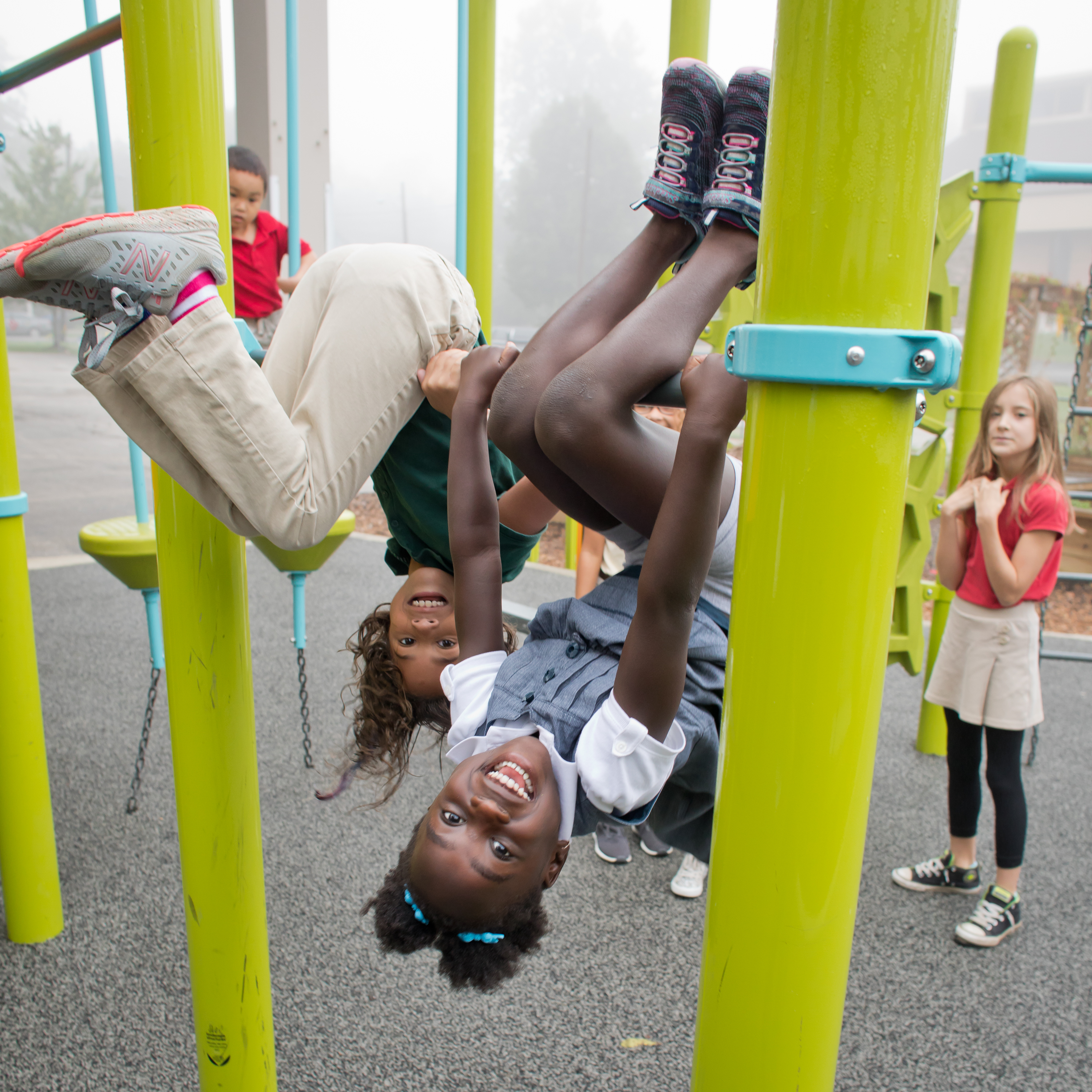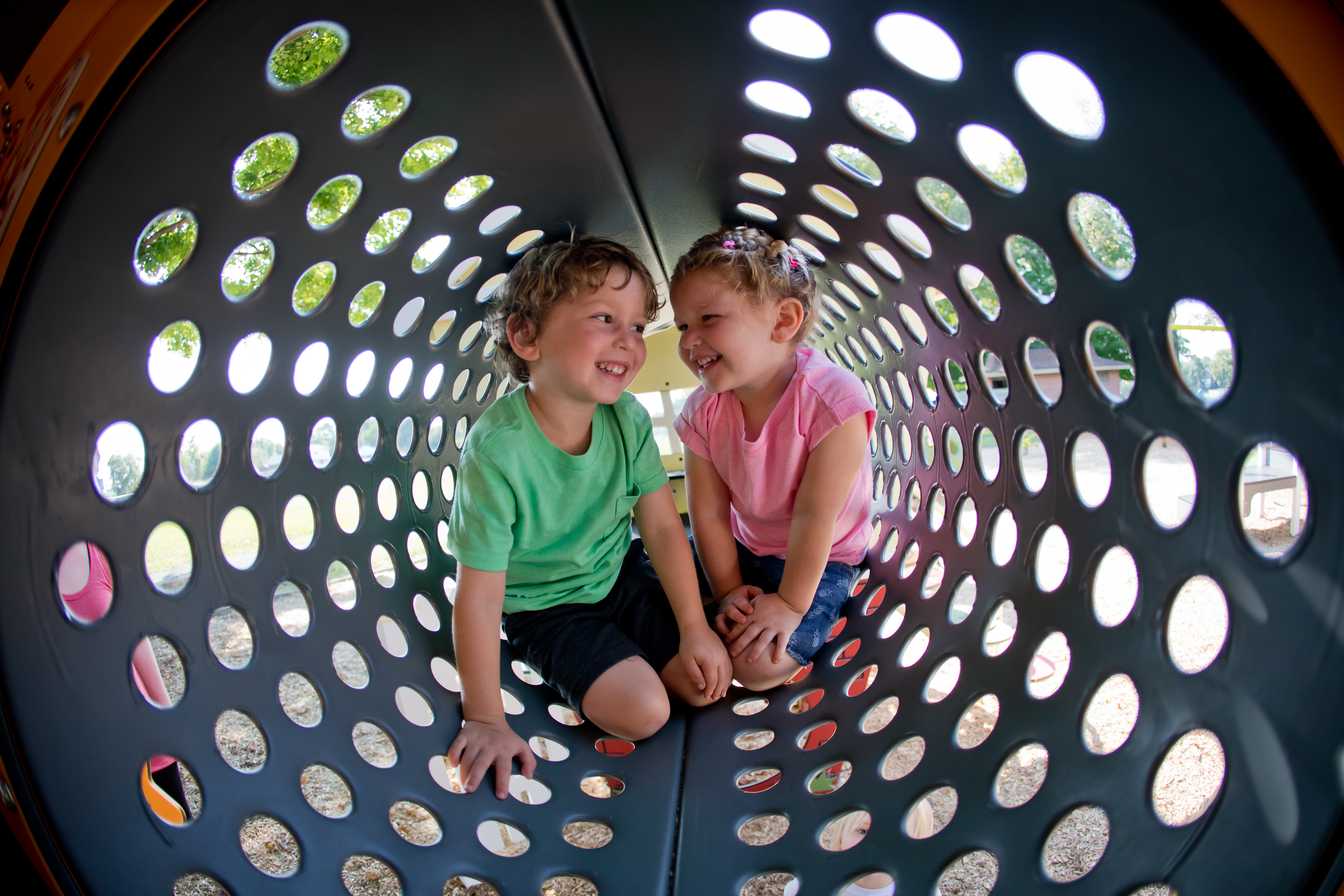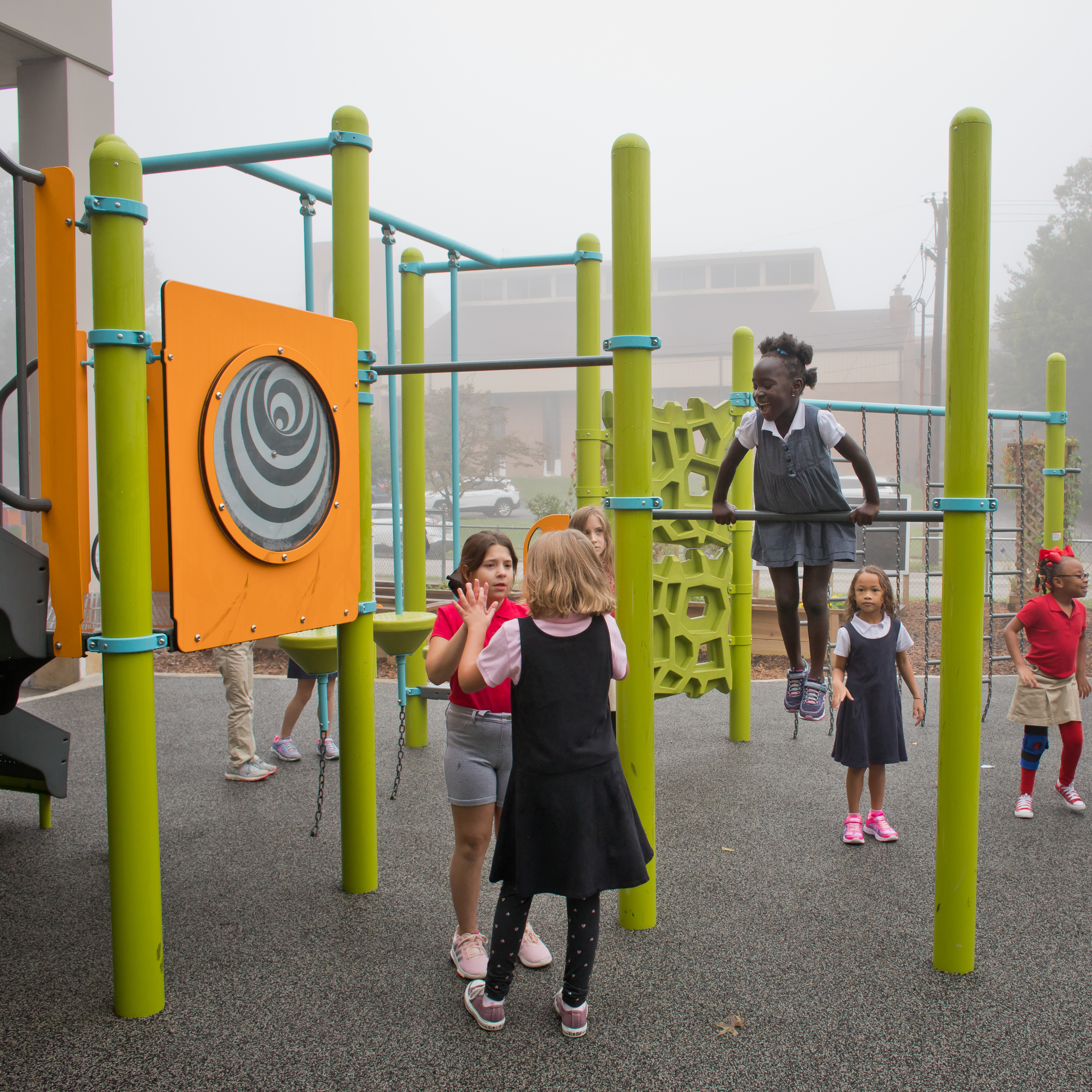
One of the initial hurdles of planning a playground is deciding on an approach to designing an area that will be used by children of a variety of ages and abilities. Infants and toddlers, pre-school, and school-age children all differ greatly in both physical size and ability, as well as cognitive and social skill level. Age-appropriate equipment should be able to accommodate these differences. In The Handbook for Public Playground Safety, the Consumer Product Safety Commission (CPSC) divides these age groups as 0-2, 2-5, and 5-12 years.

Infants and toddlers age 0-2 years have varying mobility, whether they are crawling, scooting, or walking. Most of their activity is a sensory exploration of seeing, feeling and tasting their surroundings. This age group requires space to explore cognitive-rich surroundings while being closely monitored by a caretaker.
Appropriate activities and equipment for this age range are:
-tunnel mazes and activity panels with “pull up” handles for infants
-small multi-level play structures for toddlers with crawl tunnels and slides of an appropriate height

Preschoolers age 2-5 years have a limited attention span and tend to focus on activities involving climbing over, under and around things coupled with building fine motor skills. Around 3, older preschoolers take part in dramatic play and imitation. Social skills develop as they seek to imitate older peers. Conflict and risk-taking can happen at this age and requires heavy supervision.
Appropriate activities and equipment for this age range are:
-linked play structures that are scaled to smaller children’s dimensions with age appropriate play such as crawl tunnels, small slides, enclosed play spaces, activity panels for fine motor skill development.
-Independent play events such as spring riders, talk tubes, and themed climbers that promote active and fantasy play
-A sandbox with play tables for manipulative play
-Learning wall clusters at ground level for young children of all abilities

School-aged children age 5-12 years learn and build skills rapidly, working on their fine and gross motor skills, coordination, strength, and balance. Social skills evolve with elaborate games and competitions amongst peers. Older children closer to 12 years can be nearly double the size of children on the younger end of this range with nearly 8 times the grip strength. High spirits and peer pressure influence this age and can lead to aggression or vandalism. These displays of energy can be a liability to children on the younger end of the spectrum. Sufficient challenge is needed to keep older children occupied both mentally and physically. They can work on their spacial skills, hand/eye coordination, motor planning and using imagination to create games.
Appropriate activities and equipment for this age range are:
-linked play structures with decks and play activities geared to the body dimensions and play needs of older children.
-swings, climbers, fitness clusters, spinners and other independent play events designed to provide challenge.
-sports equipment such as basketball or tether ball
Each age-specific area should be separated by a buffer zone. This can include benches, picnic tables, a pedestrian path, decorative fence, or landscaping. Play areas should be visible from the others for safety reasons, as well as being equipped with seating and drinking fountains in view if possible.
Th general budget guideline is to spend about 60 percent of your budget on equipment for older children and 40 percent for toddlers and preschoolers, but this can be varied on a case by case basis.
For more information about planning your playground, visit our website
